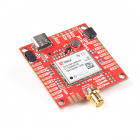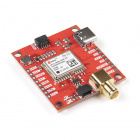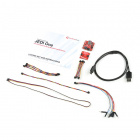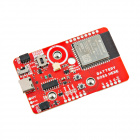Designing with the SparkFun Artemis
Contributors:
 Nate, Ell C
Nate, Ell C
Resources and Going Further
Here's a list of quick links to the resources provided in this tutorial:
- Artemis Integration Guide
- Apollo3 DataSheet (PDF)
- Pin Function Map
- Ambiq SDK/HAL
- JTAG Tools
- Artemis Bootloader GitHub
- SparkFun Arduino Apollo3 GitHub
- ARM Programming Tutorial
- Ambiq
Ready to use Artemis inside Arduino? Checkout the Artemis Development with Arduino tutorial.
Are you more comfortable with a make file and an IDE? Checkout the tutorial on how to setup the Ambiq Apollo3 SDK.
And lastly, Artemis has been designed and proven to work with our entire range of 50+ Qwiic boards. Be sure to check out and get inspired by what's possible by just plugging in the sensors and outputs you need to build something amazing!
Check out some of these Artemis/Apollo3 related boards and tutorials:
SparkFun Edge Hookup Guide
Get to know your Edge board, including both the hardware features for you to utilize as well as how to get talking to it.
Cryptographic Co-Processor ATECC508A (Qwiic) Hookup Guide
Learn how to use some of the standard features of the SparkFun Cryptographic Co-processor.
SparkFun expLoRaBLE Hookup Guide
Check out our latest LoRaWAN development board with Bluetooth capabilities! With this guide, we'll get you passing data to The Things Network in no time.
Getting Started with the MyoWare® 2.0 Muscle Sensor Ecosystem
The MyoWare® 2.0 Muscle Sensor, an Arduino-compatible, all-in-one electromyography (EMG) sensor from Advancer Technologies. In this tutorial, we will go over the features and related shields to connect the sensor to a muscle group.
Or check out these blog posts.



